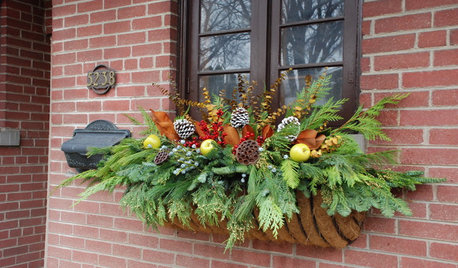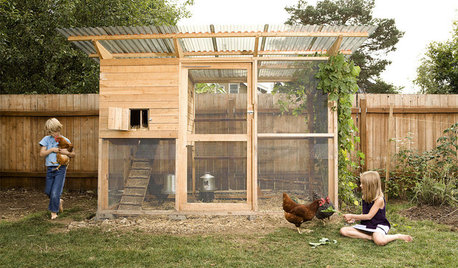A little more about winterizing--and Wilt-Pruf
marylandmojo
18 years ago
Related Stories

COLORYou Said It: ‘Adding Color Is About So Much More Than Shock’ and More
Highlights from the week include color advice, Houzzers helping Houzzers and architecture students building community housing
Full Story
DECORATING GUIDESHow to Have a Little More Fun With Your Decor
Quirky and unexpected details and accessories will raise your decorating game in 2015
Full Story
LIFESimple Pleasures: A Long Winter’s Nap
This time of year we can always use a little extra rest. Make it easy with these ideas for daytime napping
Full Story
COLORBedroom Color: The Secret to More Sex and More Sleep
Look to surprising revelations about bedroom wall colors to get more of what you want
Full Story
FEEL-GOOD HOME10 Quick Ways to Cozy Up Your Home for Winter
Make those long, cold evenings a lot more enjoyable with these easy ideas
Full Story
WINTER GARDENINGBranches Bring the Winter Spirit to Container Gardens
Add dimension and drama to winter pots with branches from austere to downright colorful
Full Story
GARDENING GUIDES10 Dazzling Winter Container Designs
Get inspired by these ideas for festive arrangements in outdoor pots and planters
Full Story
MOST POPULARWhat to Know About Adding a Deck
Want to increase your living space outside? Learn the requirements, costs and other considerations for building a deck
Full Story
ARCHITECTUREThe Truth About 'Simple' Modern Details
They may look less costly and easier to create, but modern reveals, slab doors and more require an exacting hand
Full Story
PRODUCT PICKSGuest Picks: 20 Finds to Cluck About
If you have or love chickens, you’ll flock to these coops, themed accessories, artwork and more
Full Story





palmfan
marylandmojoOriginal Author
Related Professionals
Graham Landscape Architects & Landscape Designers · Braintree Landscape Contractors · Concord Landscape Contractors · Crystal Landscape Contractors · Homewood Landscape Contractors · Mequon Landscape Contractors · Oak Forest Landscape Contractors · West Chicago Landscape Contractors · East Norriton Landscape Contractors · Saint Louis Park Decks, Patios & Outdoor Enclosures · Nashville Fence Contractors · Burlington Fence Contractors · Ridgefield Park Fence Contractors · Rockville Fence Contractors · Saint Louis Park Fence Contractorstapla (mid-Michigan, USDA z5b-6a)
elder
tapla (mid-Michigan, USDA z5b-6a)
ajr54s_yahoo_com